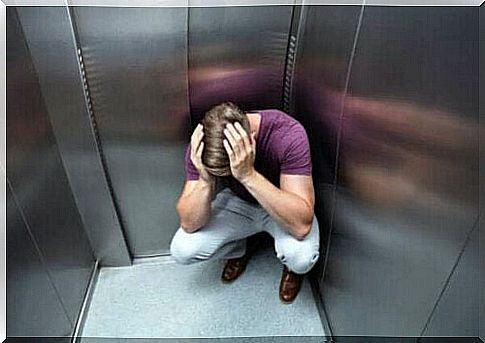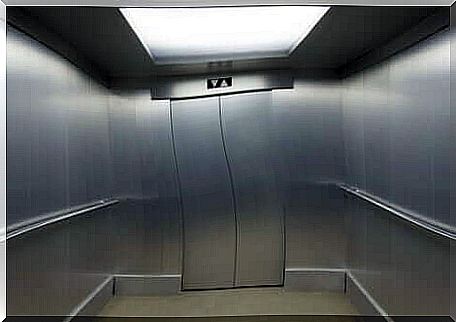Phobia To Ride A Lift: Causes And Symptoms

Fear is a natural, human reaction that helps you avoid danger. As a result, people often become frightened in new situations that are beyond their control. But everyday things can also be a source of fear for some people. They may have learned to be afraid after experiencing frightening situations or they may have gone through a traumatic personal experience. If you do not process the experience properly, your fears can become irrational and become a fully developed phobia. An example of this is the phobia of taking the elevator.
This common, modern device is a source of anxiety for many people. The cramped, closed space in an elevator makes most people feel at least a little claustrophobic while it is a truly scary experience for others. Their intense fear affects their daily lives because they cannot enter an elevator.

The symptoms of elevator phobia
The most common symptoms of phobia are sweating, tremors, headaches, nausea, dizziness, rapid heartbeat, hyperventilation and even vomiting. In order for a psychologist to officially diagnose you with a phobia, you must have experienced these symptoms for at least six months. You must also have an overwhelming fear of the matter at hand.
A unique aspect of elevator phobia is that although it is treated as a general phobia, it is actually a combination of two types: claustrophobia and acrophobia. The first is defined as the irrational fear of enclosed spaces and limited dimensions. Acrophobia, on the other hand, is the fear of heights.
In fact, elevators have aspects that contribute to both phobias, although many people’s fears are more inclined toward either one or the other. People with elevator phobia experience all the symptoms of anxiety when they think of getting into an elevator or having to get to the top floor of the building.
What causes phobia to take the elevator?
In general, traumatic experiences related to elevators cause this phobia. Not surprisingly, an individual is more likely to develop a phobia of riding an elevator if he or she has ever been stuck in an elevator for an extended period of time. It is also possible to develop elevator phobia if someone close to you has had a traumatic experience and you develop an intense fear as a result.
As with other phobias, you can also inherit your fears. In other words , you may have elevator phobia because all your life you have heard your parents talk about how very dangerous elevators are. Another possibility may be that there is no clear reason for your phobia.
If you have an anxiety disorder and happen to experience intense symptoms of anxiety in an elevator, you may develop a phobia. After all, anxiety works through association. The fact that you have had symptoms in an elevator could make you feel anxious about having to go into an elevator again.

Is there a way to cure this?
If your phobia is mild, breathing and relaxation exercises may be sufficient before entering the elevator. It is important not to avoid elevators completely or to try to escape when inside an elevator. Sudden or compulsive behaviors in and around elevators can make your phobia worse.
To make you feel safer and more secure, you can try taking the elevator with someone you trust. This person is then there to help you if you start to feel unwell or need help. The other benefit of traveling with a friend is that he can distract you from your fears.
If you try these steps but they do not work , you should seek professional help to get appropriate psychological treatment. There are three common strategies for dealing with phobias: cognitive restructuring, relaxation, and systematic desensitization.
The first is about trying to modify the perception or the negative thoughts that make it impossible for you to have a normal relationship with elevators. For example, you can get information about how many serious accidents occur in elevators. Learning the likelihood of getting stuck in an elevator can also be helpful.
Relaxation exercises focus on reducing anxiety symptoms before and during exposure to lifts. Systematic desensitization means gradually exposing the individual to what he fears.









